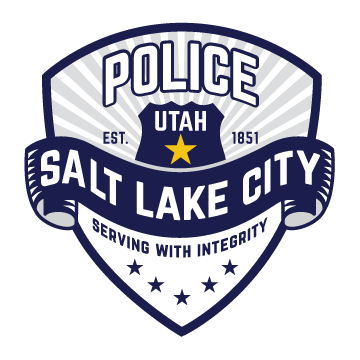SLCPD Announces Potential Travel Impacts Ahead of NHL Welcome Party
April 23, 2024SLCPD Participating in National Prescription Drug Take Back Day
April 26, 2024 |
|
| PUBLIC RELATIONS UNIT | April 25, 2024 |
|
FOR IMMEDIATE RELEASE Media Contact Information: PolicePRUnit@slcgov.com Media Request Form: https://slcpd.com/mediarequest/ |
|
SLCPD Social Workers, Police Officers Work Collaboratively to Help Woman in Severe CrisisSALT LAKE CITY — The Salt Lake City Police Department is highlighting a collaborative effort between social workers and police officers who helped a woman in severe crisis by utilizing their training and experience and providing emergency psychological care. “This case illustrates the effectiveness of our crisis intervention training, the skill of our social workers, and the professionalism of everyone involved to identify a plan focused on safely intervening and stabilizing a person in an acute crisis,” said Chief Mike Brown. “We are always exploring different strategies to better serve our communities. Having a well-developed team of social workers continues to raise the level of services we provide.” This investigation started at 12:30 p.m. on Tuesday, April 23, 2024, when an officer working a secondary employment shift at Walmart, located at 350 West Hope Avenue, received information about a woman in the parking lot screaming at the top of her lungs causing a disturbance and generating public concern. The officer went outside and saw the woman, in a full leg brace, with crutches, sitting in an electric grocery store cart. The woman positioned the electric cart behind a parked car. The initial SLCPD officer kept a safe distance from the woman and called for back-up. Officers assigned to the Salt Lake City Police Department’s Liberty Patrol Division’s Homeless Resource Center (HRC) squad responded. When the HRC officers and their sergeant arrived, they recognized the woman from a previous call for service and knew she was living with a significant amount of extensive trauma. The officers knew trying to suddenly approach the woman would make her feel trapped and could unnecessarily escalate the situation. Officers requested the assistance from SLCPD social workers and medical specialists from Gold Cross Ambulance. While waiting for additional resources, officers positioned their cars in the parking lot to prevent traffic from coming down the parking aisle. This gave the woman space to move freely in her electric cart and on foot. The initial officer began developing a rapport with the woman. She remained very agitated, but officers maintained their composure and continuously reassessed the situation to maintain awareness. Throughout the interaction, the officers would re-position themselves. The sergeant on scene gave each officer an assignment to help ensure the safety of everyone involved. The officers staged appropriate police equipment nearby in the event it was needed. Officers utilized time to their advantage. Once Gold Cross Ambulance and SLCPD social workers arrived on scene, the sergeant ensured Gold Cross had all the necessary medical equipment, including the gurney, deployed. SLCPD social workers safely approached the woman and began having a conversation with her as officers watched from nearby. One of the responding social workers said he recognized the woman as a person who he knew needed intensive mental health treatment. The SLCPD social workers quickly empathized with the woman. Her demeanor remained volatile for several minutes, which included a violent outburst where the woman nearly pushed over the electric cart. SLCPD social workers and officers remained composed. The SLCPD social workers continued speaking with the woman until she agreed to talk about getting additional help at the hospital. Even when the woman agreed to help, officers, social workers, and the emergency techs with Gold Cross Ambulance moved slowly but deliberately as to not trigger the woman. Officers and social workers developed enough trust with the woman that she initially agreed to being physically helped from the electric cart to the gurney by officers. Instead, the woman decided she wanted to move to the gurney on her own accord. Gold Cross Ambulance took the woman to a mental health treatment facility for treatment and services. This incident lasted approximately 45 minutes. Much of the training used during this incident is detailed in a training video produced by the Utah Attorney General’s Office. The Salt Lake City Police Department is releasing six-one-minute clips of body-worn camera footage from this incident. Due to the private and sensitive nature of this call, including the discussion of medical information, and to protect the woman’s identity, certain redactions have been made. Media may use this video with credit to the Salt Lake City Police Department. The mission statement of the Salt Lake City Police Department’s Community Connection Team (CCT) and its Crisis Intervention Team (CIT) is to provide a safe environment for people to access individualized care, support, and appropriate community resources. The team includes the SLCPD Social Worker program and the SLCPD Crisis Intervention Team. The SLCPD CIT works collaboratively as co-responder teams with officers to provide a safe environment for people to access individualized care, support, and appropriate community resources. The SLCPD’s CIT provides specialty training and coordination to CIT officers within the Department and in partnership with local agencies. CIT officers are certified in crisis management response and follow-up. The team conducts academies and other training for all SLCPD officers to ensure consistency within the CIT program. The team also provides follow-up for community mental health-related issues encountered by SLCPD officers. The team’s approach to homelessness facilitates open and honest interactions, strengthens relationships, and builds opportunities for open communication between the SLCPD and Salt Lake City’s diverse geographic and demographic communities. It also encourages standards of mutual respect and commitment to address problems and concerns within the community. ### |
|



